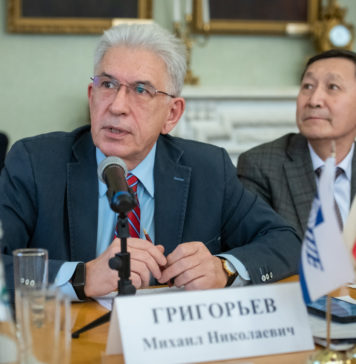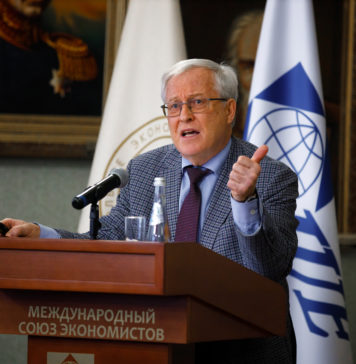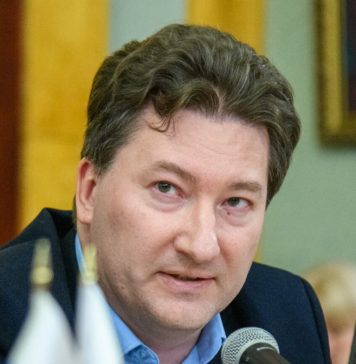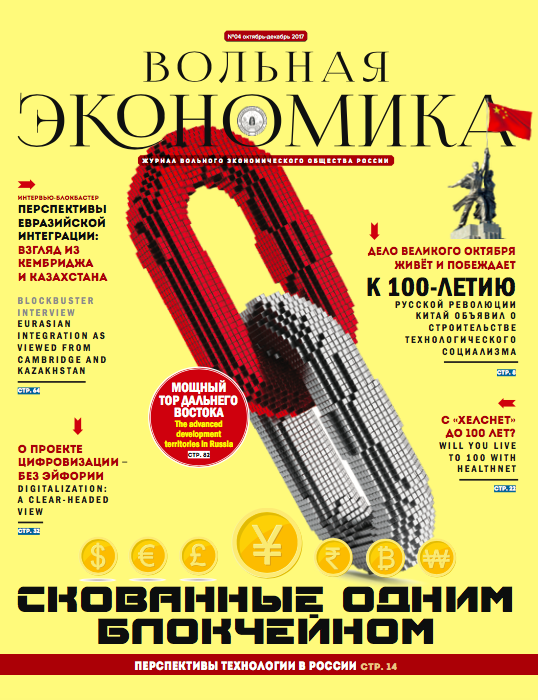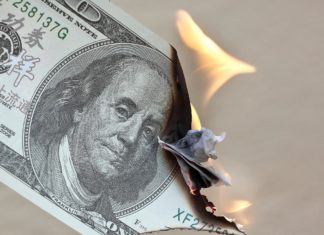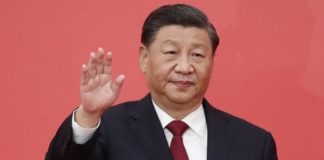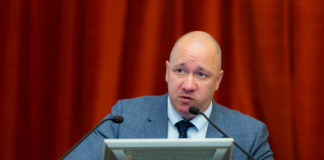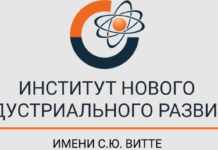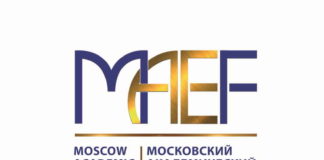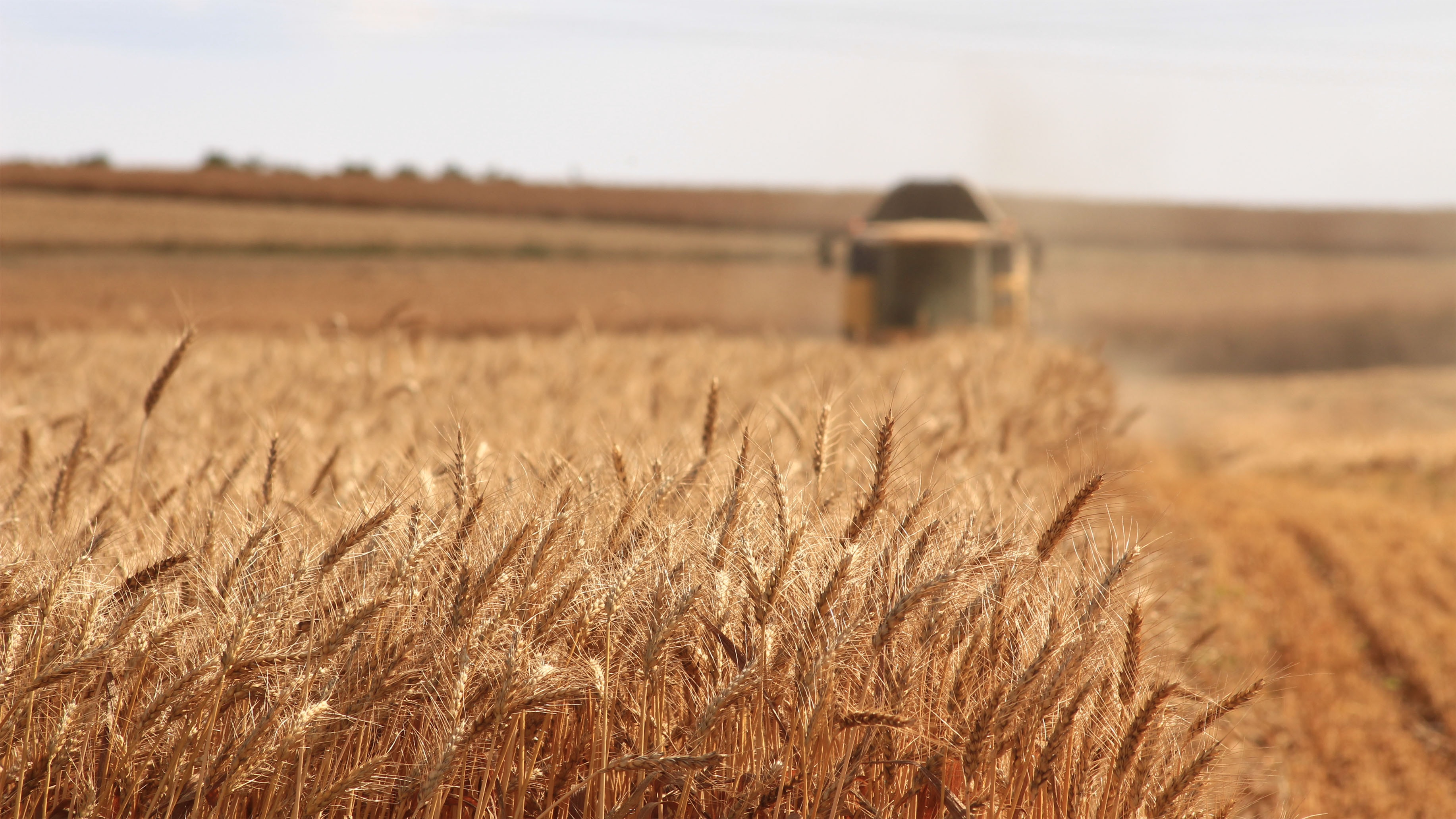 Macroeconomically, the agricultural situation is basically good. The sector’s share in GDP was 4.36% in 2017. And it has been growing over the last 6 years. According to every progress report, the sector is among the country’s top 5. But has our agriculture been really successful?
Macroeconomically, the agricultural situation is basically good. The sector’s share in GDP was 4.36% in 2017. And it has been growing over the last 6 years. According to every progress report, the sector is among the country’s top 5. But has our agriculture been really successful?
Alexander Petrikov,
Director of the A.A. Nikonov All-Russian Institute of Agrarian Problems and Informatics, Academician of the Russian Academy of Sciences, Member of the Presidium of the VEO of Russia
Underperformance
It would be a strategic error to reduce the role of agriculture in the economy to the production of food and raw materials for industry, and to evaluate its contribution to GDP based on that, as most economists unfortunately do and as required by the recently adopted Russian Spatial Development Strategy 2030, which prioritizes 14 agro-industrial regions based on their 2% share in the country’s GDP. It makes no mention of the agricultural development in the other regions.
In our opinion, the significance of the sector for the national economy is much broader. Agriculture is not merely production of goods and raw materials for industrial and bioenergy sectors.
Firstly, it’s the country’s food independence as a prerequisite for national security. The sector creates jobs in related industries; thanks to agriculture jobs have been created in more than 20 sectors of the economy. But first and foremost, what we are talking about is the preservation of the rural population and the rural way of life, the contribution of agriculture to the formation of the cultural landscape, the provision of social monitoring in rural areas. So far, those aspects have not been evaluated. And therefore the role of agriculture has been played down.
While assessing that role, we must not forget about the international aspect. Russia has the largest agricultural potential with its 9% of global cultivated land, 50% of global black soil area, 20% of fresh water reserves, 10% of the world’s production of mineral fertilizers. And with a mere 2% of the world’s population.
We need to effectively use this potential and to solve the world’s food problem in the interests of Russia. Currently, the country’s share in the global GDP created in the agricultural sector is just under 2%, which is much lower than its share in the production potential. Based on those figures, the sector’s underperformance is evident and so is its great potential.
Successes and challenges
Economic growth in agriculture has been observed every year since 1999, except for the drought years of 2010, 2012 and 2018. According to preliminary estimates, it is 99.4%. The stage of recovery growth in agriculture was over in 2017. For the first time in the post-reform period the gross output exceeded the 1990 indicators by approximately 2%. Import substitution in the domestic market has been achieved for major products. Very ambitious targets for increasing exports have been set. Those are well-known facts that are not worth talking about in detail. It would be much better to talk about the problems that accompany the economic growth, and we will point out the main ones.
Major ills of agriculture
• First of all, it is the extreme unevenness of growth in the agricultural sectors: in crop production, the 1990 level is exceeded by 42%, while animal husbandry is still below the pre-reform level by 28%.
• Agricultural production volumes fluctuate significantly from year to year, as can be seen from the variation of gross yields of grain and leguminous crops. Fluctuations can be as large as 20% or more, which is much larger than in the developed countries. They lead to significant volatility of the produce market and incomes of agricultural producers. Such instability provides a better insight in the sector than the growth rate per se.
• Agriculture, especially crop production, is unevenly spread across the regions, which leads to large fluctuations in the yields of major crops. Products are grown in regions with low bioclimatic potential, which, of course, affects the cost.
• Economic growth is mainly limited to a small bunch of agricultural producers. Those are major agricultural companies and large peasant farms which use a wide variety of technical equipment and advanced technologies. The rest of the enterprises and farms need modernization. For instance, the share of large companies with profits exceeding 100 million rubles significantly increased between 2009 and 2014, but the share of small farms in gross output has decreased. Production concentration can be assessed using the results of the 2016 all-Russian agricultural census compared against the 2006 census results. The figures show that the concentration of sown areas in large farms with sown areas of over 10,000 hectares is still under way. While in 2006 they accounted for 19.5% of all the crops, in 2016 the corresponding figure is nearly 36%. At the same time, those enterprises account for just 3% of the total number of farms.
• The substantial dependence of our agriculture on technology imports which creates scientific and technological risks for the country’s food security. The price of agreements on technology imports (i.e. on licensing) is 10 times the price of export agreements.
• Growth in agriculture has not led to a slowdown in food inflation. Therefore, we can see that food inflation was higher than the overall inflation between 2012 and 2015; the opposite was true only for 2016 and 2017, and in 2018 the situation reversed again. This factor, as well as the decline in real incomes of the population, has led to a situation where families in Russia have to spend a significant portion of their income on food, and that portion is even greater for low-income families. Naturally, such a situation shows that the economic affordability of food in our country leaves much to be desired, to say the least.
• Another alarming point. Economic growth in agriculture had little impact on our ability to solve the social problems of the countryside. And I would even say that the economic growth not only did not solve social problems but exacerbated the social situation in most rural areas. The standard of living in the countryside is still lower than in the cities. The process of social desertification has been gaining momentum in the majority of regions. Our institute was the first to rank the municipal districts by the number of personal subsidiary farms with abandoned land plots and empty houses (again, based on the results of the 2006 and 2016 agricultural censuses). We are especially concerned about the process due to the fact that it has been developing not only in the outlying regions of Russia (except the North Caucasus), but also in the historical center and in the north-west.
• And the final point, the unsatisfactory state of soil fertility. According to the results of the agricultural lands monitoring carried out by the Russian Ministry of Agriculture, the soils have low humus content. Soils with humus content below the required minimum make up more than 60% of the total area, and the ratio remains unchanged.
Summing up, we can say that the current model of agrarian policy has ensured growth in agriculture, food independence for key products, and a gradual increase in exports. But at the same time, the shortcomings of the policy have been revealed, such as the uneven development across sectors and regions, volatility, bipolarity of the agrarian structure, dependence on technology imports, and social distress in rural areas. We need to move from a policy that ensures economic growth to a policy of growth quality, that meets the economic, social and environmental efficiency criteria. Such a policy should be aimed at eliminating the structural, inter-sectoral and territorial disproportions mentioned earlier.
Five areas of agricultural development
• Improving the sectoral structure through the formation of food chains, creating added value according to the “field to counter” principle (which will require a government program for the development of agriculture, a set of sectoral subprograms within the current government program). The sectoral principle has been applied in a very limited fashion, with respect to dairy farming, flax production and production of seeds for certain crops. Russian Ministry of Economic Development, rather than the Ministry of Agriculture, has been put in charge of regulating growth of agricultural produce. No effort has been made to build the food chains or to eliminate the bottlenecks.
• Establishing specialized production zones for certain products based on agricultural zoning. The latest map of agricultural zoning was drawn up back in 1989. A deliberate policy of sectoral distribution of agriculture is absolutely essential. A key measure here is the equalization of state support for the production of individual products across the regions, so that those sectors are concentrated in areas where the bioclimatic potential is the best, and not where the government support is better. In addition, the development of processing and storage of products, as well as transportation, is of great importance, as evidenced by the experience of other countries where growing regions have been designated for the production of certain foodstuffs, like, for example, fruit belts in the United States.
• Giving priority to the development of small and medium-sized agricultural companies, peasant farms, which involves redistribution of budget support in favor of development of agricultural cooperation, the so-called contract agriculture, when a large enterprise, a market integrator, reassigns part of its production cycle to small agricultural units supplying them with necessary production resources and processing their products. That policy should focus on improving the access to subsidies and credits for medium and small businesses. Currently, as evidenced by the 2016 census, small and medium businesses have twice more difficulties in accessing subsidies than the large ones. At the same time, big businesses have currently reached their production limits, to a certain degree, while small businesses, which possess the majority of reserves, have stopped developing.
• Developing agricultural science and creating a system for implementing research results in production within the sector. It will require an increase in investments in agricultural research, both public and especially private. At present, the ratio of domestic expenditures on research and development in agriculture, gross and added value created within the sector, are going down and are 2 times lower than those for overall scientific research. Besides, it is necessary to create a private/state controlled corporation for agricultural innovation, comparable to the Skolkovo Foundation, Rostech, or the Industrial Development Fund, which not only finance applied research and development but also manage the implementation of the results in production. Yet the government has opened our market to major transnational innovative companies, like Bayer and Monsanto, which will soon be calling the shots in seed production, instead of creating a large domestic operator for that market.
• Adopting a new model of rural development. Currently, at the request of the President of the Russian Federation, an appropriate state program is being prepared on the development of rural territories until the year 2030. But there are some concerns about the principles on which it is supposed to be built. Most importantly, it will be an element of the agrarian policy; that is, the Ministry of Agriculture of Russia will be responsible for it. In our opinion, it should be a product of several government agencies, not just the Ministry of Agriculture. To this end, it is advisable to create an agency for rural development under the Russian government or to authorize the Ministry of Agriculture to coordinate the activities of ministries and departments in rural areas. The program should not be limited to rural settlements, it should include measures for the development of small towns and should stimulate non-agricultural employment in the countryside, which is not the case now, and, in my opinion, won’t be in the future. In the long run, it should be supplemented by measures for developing rural self-government.
Unimpressed with success
Ruhman Adukov,
Head of the Agro-Industrial Complex and Rural Development Management Division of the All-Russian Research Institute of Economics, Labor and Management in Agriculture, Professor
There’s no reason to say that the achievements are very significant. Those achievements have taken place in fast-growing industries. Grain production records are not very impressive either. The record grain harvest of 1973 has not yet been surpassed, the shortfall being 8 million tons. A harvest of 100 million tons of grain of more was achieved 10 times over the 23 years preceding the reform, and during the 28 years after the commencement of the reforms, there were 8 such harvests despite the fact that the farms are now privately owned and it would seem that they should have been much more successful. On the whole, the rate of growth in agriculture, as well as in the other sectors, must correspond to Russia’s potential. The potential is huge. And without taking it into account it is difficult to assess how successful we are.
Agricultural zoning
Anatoly Altukhov,
Head of Division at the Federal Research Center of Agrarian Economics and Social Development of Rural Territories — All-Russian Research Institute of Agricultural Economics, Academician of the Russian Academy of Sciences
Strategic documents on the country’s spatial development provide more questions than answers, not only on territorial development, but also on the agro-industrial complex and especially on agriculture. For a number of reasons, many points have not received proper substantiation and are fragmented, at best. We live by the data that were obtained back in the 1980s. Yet the agricultural zoning is a scientific basis for many of the key issues of organization of sustainable environmental management in agriculture, introduction and implementation of scientifically based management systems, and development of agricultural specialization arrangements. Since there can be no equal natural and socio-economic conditions for the production of a particular type of agricultural produce, each such type is assigned to individual farms and regions of the country. Such a conceptual approach is fully justified not only in terms of theoretical or methodological approach, but also in practical terms. At the same time, we believe that the government should play a key role in regulating the process of agricultural specialization by actively pursuing an effective regional agricultural policy.
Development of small and medium farms
Vladimir Bashmachnikov,
Chief Researcher at the A.A. Nikonov All-Russian Institute of Agrarian Problems and Informatics, Doctor of Economics, Professor
An interesting point: only 15% of the farming system has seen growth. 85% is in stagnation, there is no development, no government loans or support — nothing. However, it’s alive, and people have adapted to the free market paradigm. It’s a huge asset for a future reboot. And, in addition, we have a very important example: the Saratov region where so far there has not been a single year in which the authorities would hold back the development of private farming, either officially or semi-officially. Today, farmers produce more than 50% of the region’s grain and other crops, and private farms account for almost 40% of the region’s gross agricultural output – not personal subsidiary plots, but farms. This example is very convincing. I think that people who are not prone to gigantomania see it as a serious argument in favor of development of small and medium farms.
What is domestic product?
Valery Koshelev,
Head of Department at the K.A. Timiryazev Russian State Agrarian University — Moscow Agricultural Academy, Doctor of Economics, Professor
Domestic products are now understood to mean any products manufactured inside the country, regardless of who produced them and what they were made from. At the same time, according to the expert community, a significant part of the so-called domestic products are made from imported raw materials or using imported seeds or other materials. That is, such products can hardly be classified as domestic.
High import dependence
Vlada Maslova,
Head of Division at the Federal Research Center of Agrarian Economics and Social Development of Rural Territories, Doctor of Economics, Professor of the Russian Academy of Sciences
All in all, the process of import substitution in the agro-industrial complex should be considered not only from the point of view of import substitution of food products, but also from the point of view of technology substitution and the resource base. Despite the import substitution policy, imports for many types of products have increased over the 5 years. For example, for sugar beet seeds, sunflower seeds, vegetable seeds. Imports of breeding livestock, veterinary vaccines, herbicides and fungicides have also increased. As Alexander Vasilyevich has already said, we remain highly dependent on imports of agricultural equipment and technologies.
Low affordability of products
Oleg Ovchinnikov,
Head of the Center for Agrarian Problems of the Institute of the USA and Canada of the Russian Academy of Sciences
According to Rosstat, the average per capita expenditure on food of the average Russian consumer is currently about 5.5 thousand rubles per month or 180 rubles per day. Can you say, dear colleagues, what kind of food consumption can there be with the average spending of 180 rubles per day? Moreover, Rosstat claims that over half of Russia’s population, who are below the poverty line, have to spend as much as 50 percent or more of their income on food and still are unable to get adequate nutrition. Let me remind you that in the United States, the current share of household spending on food is, on average, about 8–10%.
Were preferences any good?
Dmitry Sorokin,
Research Director of the Financial University under the Government of the Russian Federation, Vice-President of the VEO of Russia, Vice-President of the International Union of Economists, Corresponding Member of the Russian Academy of Sciences, Doctor of Economics, Professor
I was taught from childhood, and rightly so, that it is simply wrong to use year over year measurements in agriculture, that we should use the average annual figure instead. I looked at the results: given the preferences we were offered, the average annual growth rate of agricultural output was 2.7% between 2014 and 2018. Then I wondered what the growth was during the previous five years, when no preferences were offered. (Both periods had drought years). 2.8%! It turns out that the preferences had no effect. And what are the forecasts for the next five years? The average annual growth rate will be 1.9%, 1.4 times less than during the five-year period with the preferences. I just don’t get it.
Based on the materials of the Twentieth expert session of the Coordination Club of the VEO of Russia «On the priorities of socio-economic development of Russia’s agro-industrial complex: from growth to the quality of growth».

